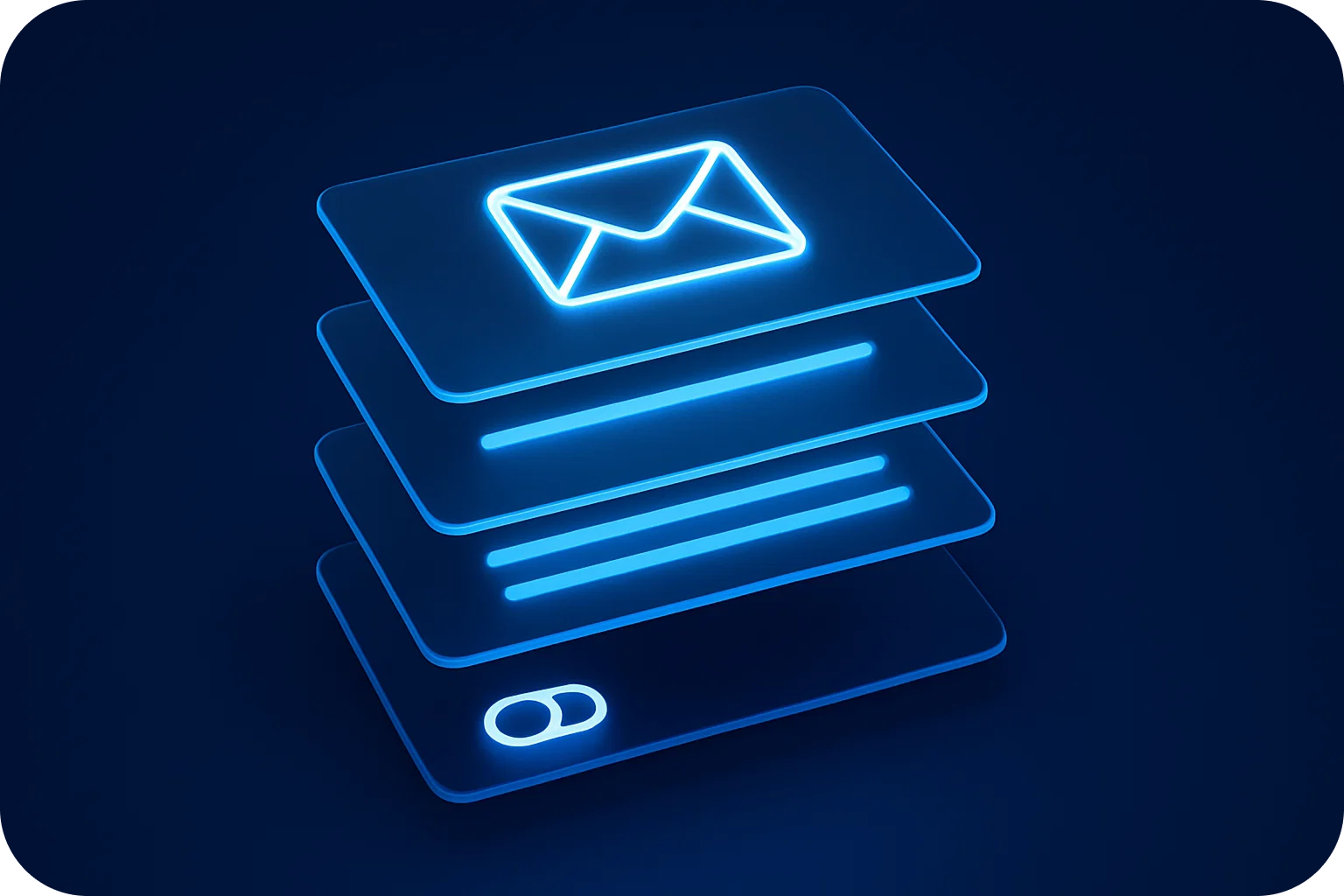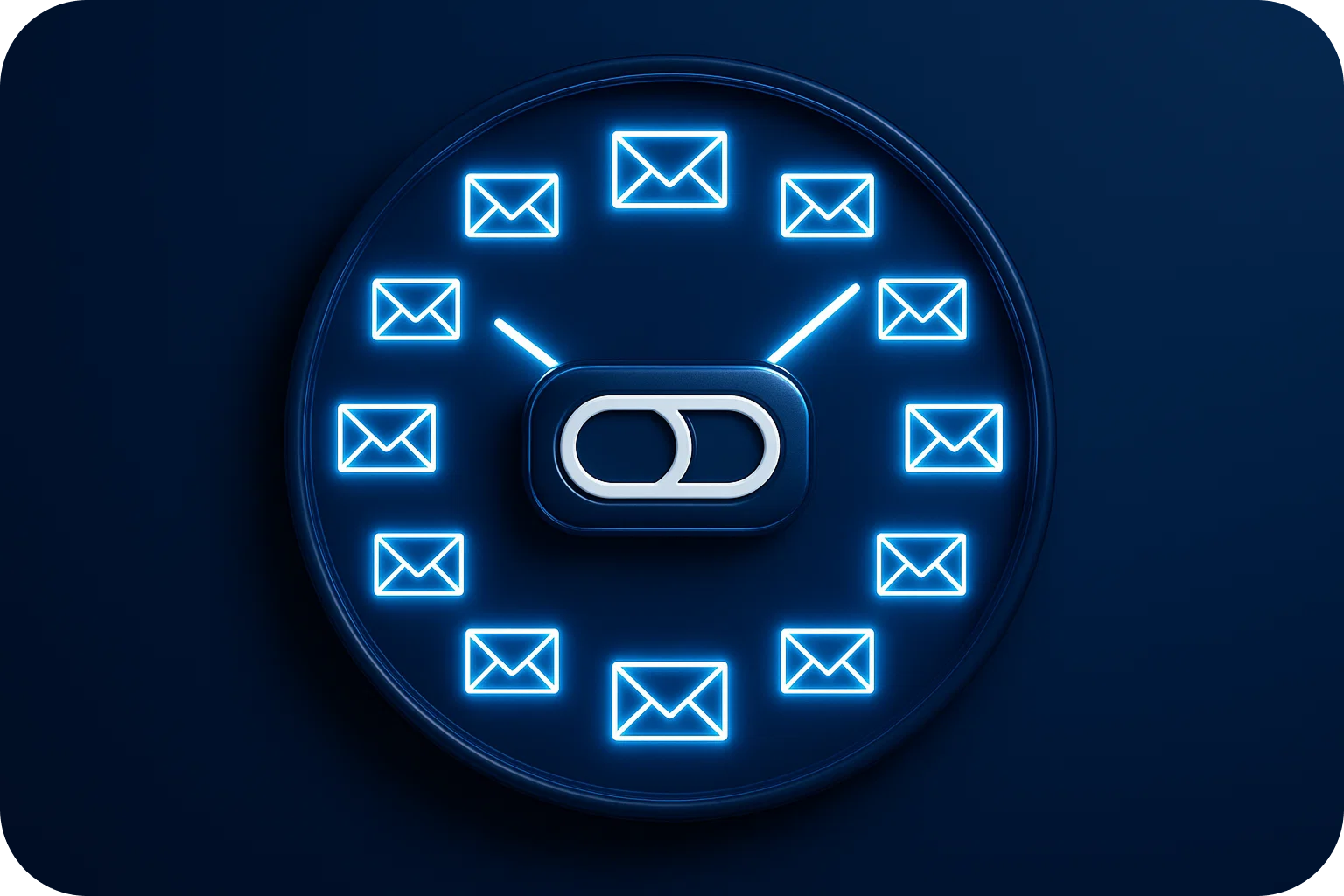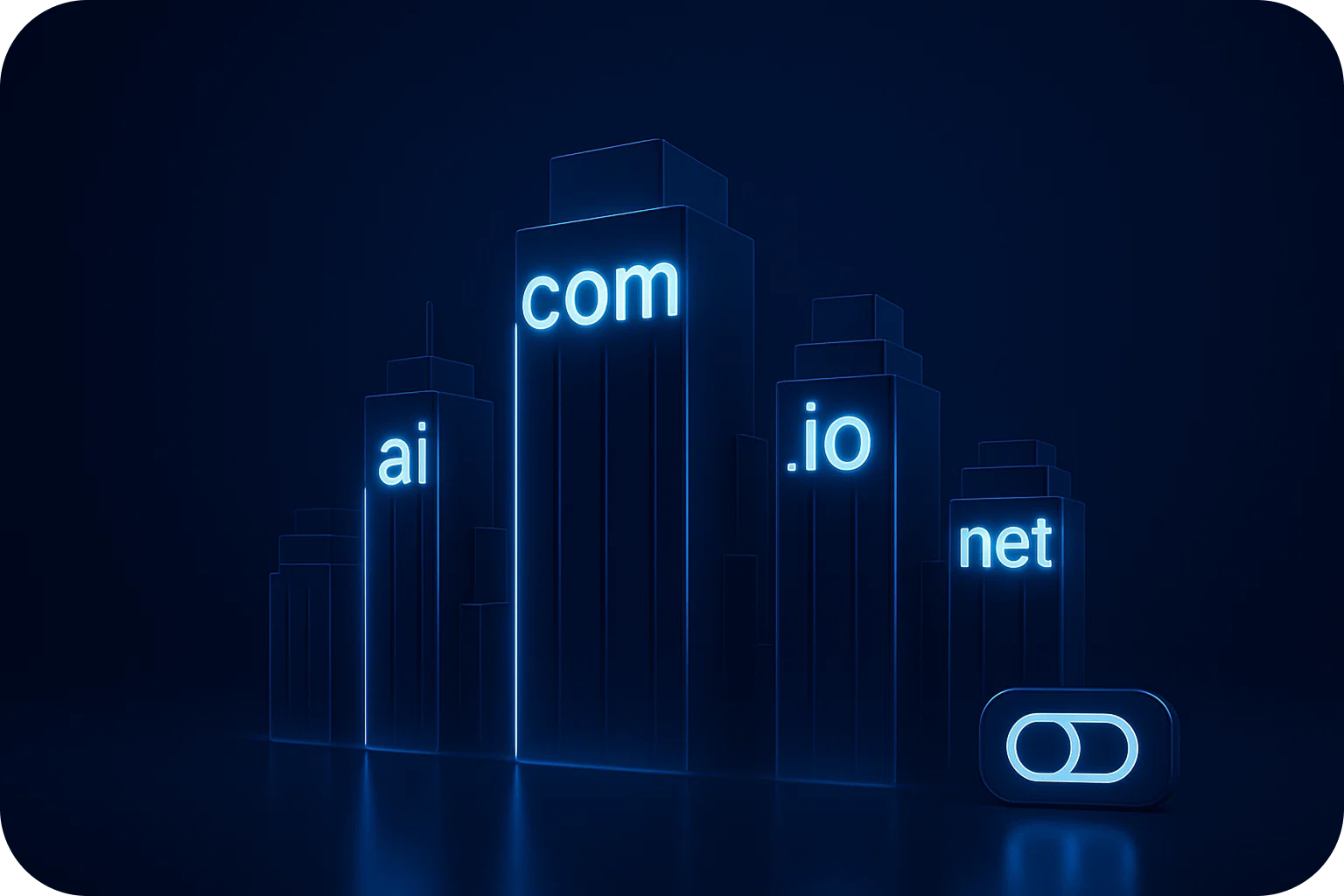The Sender Reputation Lifecycle: From Warm-Up to Maturity to Decline

Your sender domain isn't just an email address; it's a living asset with its own lifecycle. Understanding how sender reputation evolves from its first email to eventual decline is critical for maintaining peak cold email deliverability throughout your outreach campaigns.
Just like building personal credit, your sender domain goes through distinct phases that determine whether your emails land in the inbox or get filtered to spam. Let's explore each stage of this lifecycle and how to optimize for maximum deliverability at every phase.
Phase 1: The Warm-Up Period (Weeks 1-4)
The Critical Foundation
When you first set up a new sender domain, email service providers (ESPs) like Gmail, Outlook, and Yahoo have zero history with your sending patterns. This makes the warm-up period the most vulnerable and most important phase of your domain's lifecycle.
Domain age matters significantly during this stage. A brand-new domain sends immediate red flags to ESPs. They're watching for:
- Sudden high-volume sending
- Inconsistent sending patterns
- Poor engagement metrics
- Spam complaints or bounces
Best Practices for Warm-Up
Start with 20-50 emails per day and gradually increase volume by 10-20% weekly. Focus on sending to highly engaged contacts first, people who are likely to open and respond. This positive engagement signals to ESPs that your emails are wanted.
During warm-up, your cold email deliverability will be naturally lower. Expect inbox placement rates around 60-70% as ESPs evaluate your sending behavior. This is normal and will improve as you build a reputation.
Key warm-up metrics to monitor:
- Open rates (target: 30%+)
- Reply rates (target: 5%+)
- Bounce rates (keep below 3%)
- Spam complaint rates (keep below 0.1%)
Avoid the temptation to rush this process. Domains that skip proper warm-up often get flagged permanently, requiring you to start over with a new domain, a costly mistake in both time and money.
Phase 2: The Growth Phase (Months 2-6)
Building Momentum
Once you've completed the initial warm-up, your sender domain enters the growth phase. This is where domain age begins working in your favor. ESPs have established a baseline understanding of your sending patterns and are gradually increasing trust.
During this phase, you can scale your sending volume more aggressively while maintaining strong cold email deliverability. Your inbox placement rates should climb to 80-90% if you're following best practices.
Scaling strategies for the growth phase:
- Increase daily volume by 20-30% every two weeks
- Expand to multiple email accounts under the same domain (3-5 accounts recommended)
- Test different outreach sequences and messaging
- Implement A/B testing for subject lines and content
This is also the ideal time to diversify your infrastructure. Rather than relying on a single sender domain, consider adding 2-3 additional domains to your rotation. This protects your operation if one domain experiences deliverability issues.
Maintaining Quality During Growth
The biggest mistake during the growth phase is prioritizing volume over quality. As you scale, maintain strict list hygiene:
- Verify all email addresses before sending
- Remove hard bounces immediately
- Monitor engagement rates closely
- Segment your lists based on engagement history
Remember that your sender domain reputation is cumulative. Every email you send either strengthens or weakens your standing with ESPs.
Phase 3: Maturity (Months 6-18)
Peak Performance
A mature sender domain with established domain age is your most valuable asset. ESPs trust your sending patterns, and you've demonstrated consistent positive engagement over time. This is when cold email deliverability reaches its peak—often 95%+ inbox placement.
Characteristics of a mature sender domain:
- Consistent sending volume and patterns
- Strong engagement history (6+ months)
- Low complaint and bounce rates
- Established authentication (SPF, DKIM, DMARC)
- Positive feedback loops with major ESPs
At maturity, you have more flexibility in your outreach. You can test higher volumes, experiment with different messaging approaches, and recover more quickly from occasional deliverability dips.
Protecting Your Mature Domain
The maturity phase requires vigilance, not complacency. Continue monitoring:
- Engagement trends: Are open and reply rates declining?
- Deliverability metrics: Track inbox placement weekly
- List quality: Maintain aggressive list hygiene
- Technical infrastructure: Ensure DNS records remain properly configured
Many senders make the mistake of becoming careless once they achieve strong deliverability. This is precisely when you should double down on best practices to extend the maturity phase as long as possible.
Phase 4: Decline (Variable Timeline)
Recognizing the Warning Signs
Eventually, every sender domain experiences a decline. This might happen after 18-24 months of heavy use, or it could occur sooner if sending practices deteriorate. Domain age alone won't protect you from decline if engagement drops.
Early warning signs of decline:
- Inbox placement dropping below 85%
- Increasing spam folder placement
- Rising bounce rates
- Declining open and reply rates
- More frequent "promotions" or "updates" tab placement (Gmail)
Decline can be gradual or sudden. Gradual decline typically results from engagement fatigue, your audience becomes less responsive over time. Sudden decline often indicates a technical issue, a spam trap hit, or a significant complaint spike.
Managing Decline
When you detect a decline, act immediately:
Short-term fixes:
- Reduce sending volume by 30-50%
- Segment your list and send only to highly engaged contacts
- Review and improve email content and subject lines
- Check all technical configurations (DNS, authentication)
Long-term strategy:
- Begin warming up replacement domains
- Rotate sending across multiple domains
- Implement stricter list hygiene protocols
- Consider retiring the declining domain before it damages your infrastructure reputation
Some domains can be rehabilitated through aggressive engagement-focused campaigns and volume reduction. However, if decline continues for 4-6 weeks despite interventions, it's often more efficient to transition to fresh domains.
Lifecycle Management Strategy
The most sophisticated cold email operations don't rely on a single domain moving through this lifecycle. Instead, they implement a rotation strategy:
- New domains (warm-up): 2-3 domains always in warm-up phase
- Growth domains: 3-5 domains scaling volume
- Mature domains: 5-10 domains at peak performance
- Declining domains: Gradually reducing volume before retirement
This approach ensures consistent cold email deliverability across your entire operation, regardless of individual domain lifecycle stages.
Conclusion
Understanding the sender reputation lifecycle transforms how you approach cold email deliverability. Rather than treating your sender domain as a static tool, recognize it as a dynamic asset requiring active management through each phase.
Domain age provides foundational credibility, but it's your ongoing sending practices that determine whether your emails reach the inbox. By optimizing for each lifecycle stage from careful warm-up through strategic decline management, you'll maintain the deliverability rates that make cold email a viable growth channel.
The senders who win at cold email aren't those with the oldest domains or the highest volumes. They're the ones who understand this lifecycle and build infrastructure that adapts to each phase, ensuring their messages consistently reach prospects when it matters most.
More articles
Get started now




%201.png)




.png)
